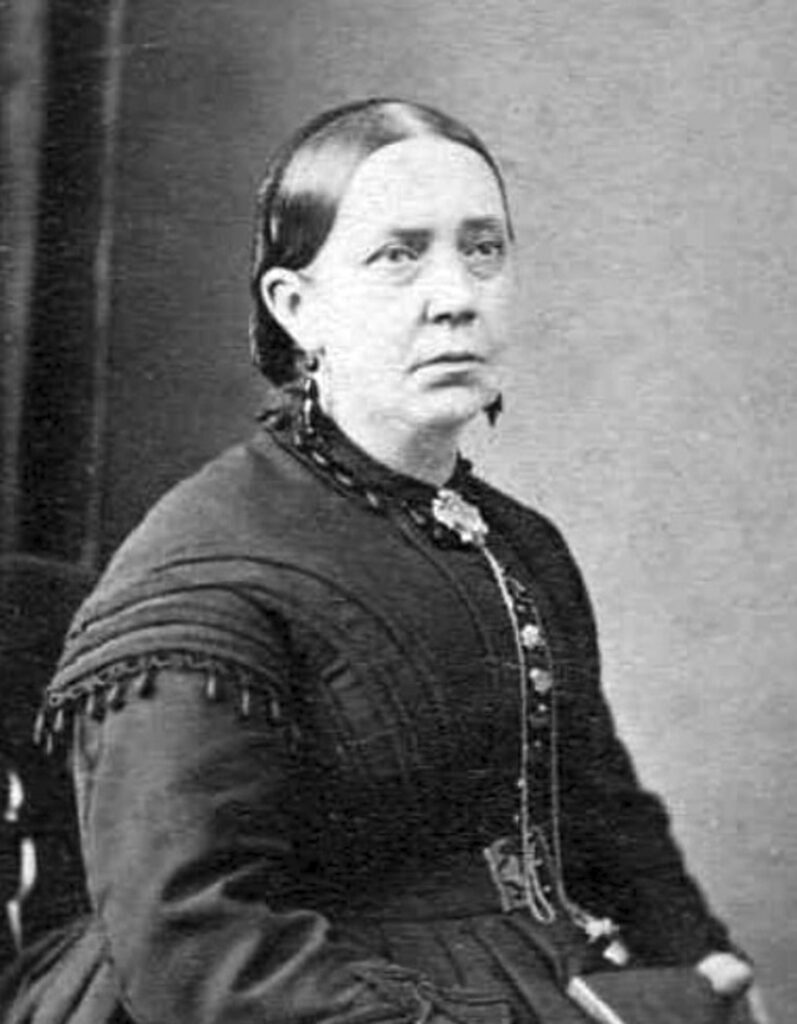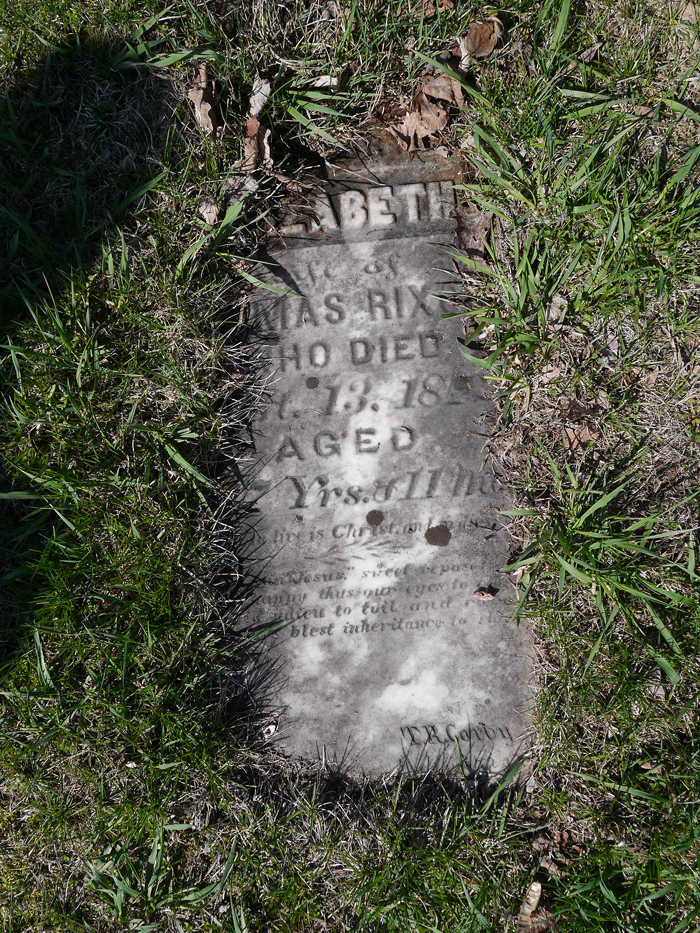
My father’s mother, Lillian (Forrester) Hamilton, was the historian of the family. She jotted notes on the backs of old photographs and wrote down stories about her grandparents and great-grandparents. These have proved to be extremely helpful to my research, but there was still one big brick wall in her family tree that I have been trying to break through.
Until I started researching my family’s history, I knew very little about my Mama Lil, as we grandchildren called her. Eventually I discovered that Lillian’s mother was Samantha (nicknamed Mattie) Rixon, born in 1856 near Brighton, Ontario. According to Lillian, when Mattie was about three years old, her father died of typhoid and her mother remarried and moved to the United States. Mattie and her little brother were brought up by their grandparents, Thomas Rixon and Elizabeth (Betsey) Thompson. The Rixons had already brought up 12 children, so perhaps raising two more didn’t seem very difficult to them. Lillian said that Thomas Rixon was born in England and came to Canada as a young man, but she did not mention anything about Betsey. Calculating her age from the 1871 Census of Canada, Betsey was born around 1804 in Ontario.
Recently, I searched the public member trees on Ancestry.com for “Elizabeth Betsey Thompson.” Betsey appeared in several family trees, sometimes with no parents, sometimes with several generations of ancestors. Some of the trees included glaring inconsistencies. Several agreed that Betsey’s parents were John Thompson and Catherine Bennett, and that the Thompsons had come to Sophiasburgh, Ontario from Goshen, Orange County, in southern New York State.

At first, I was not convinced that the Thompsons of Sophiasburgh and the Thompsons of Goshen were linked. After all, John Thompson is a very common name, and none of the trees I had found included solid sources. In fact, I felt I was going in circles: public member trees referred to other people’s trees as sources, but original BMD or census records were rare. I did, however, note similarities between the rather unusual names of John Thompson’s children (Kezia, Phoebe and Rhoda, for example,) and Betsey’s children. There was also evidence in death and census records that some of Betsey’s older siblings had been born in New York.
I contacted the owner of the tree that seemed to make the most sense and included the most sources. She has been extremely helpful and put me in contact with the person who did most of the original research she used. I have talked to that person by phone.
I also wrote to the Orange County Genealogical Society (OCGS) and they put me in touch with a local resident who has researched the Thompson family extensively. She wrote to me, indicating that there is a very big file on the Thompsons at the OCGS, including documents concerning John Thompson’s family in Ontario.
So I am now convinced that I’m on the right track. Over the next few months, I plan to visit the libraries of the Quinte Branch of the Ontario Genealogical Society, and the Orange County Genealogical Society.
I would love to find a smoking gun – a marriage record in Goshen for John Thompson and Catherine Bennett, for example – but I don’t think that is going to happen. I do expect to find secondary sources and books that mention the family. My goal is to make a strong argument, based on Genealogical Proof Standards, that Betsey Thompson’s family immigrated to Ontario from Goshen around 1800.
photo credits:
courtesy Karen L. Singer
Janice Hamilton

